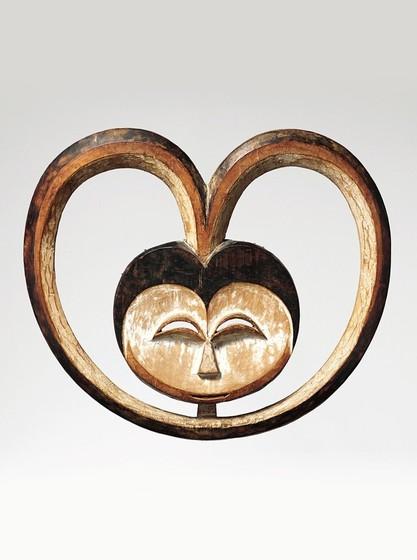Oro, the essence of communication, takes place in the eyes. —Yoruba axiom
Presenting a cross-cultural selection of works from west, central, and east Africa, spanning the 13th to the 19th centuries, The Inner Eye: Vision and Transcendence in African Arts raises profound questions about the role of vision and culturally determined ways of seeing, both in our experience of the arts and perception more generally. Through over 100 sculptural figures, masks, initiation objects, royal emblems, reliquary guardians, and textiles, the exhibition explores a range of distinct African aesthetic philosophies in which vision and visual engagement with the arts can enable transitions between different stages of life, states of being, or even from human to spirit realms.
This conversation with Dr. Polly Nooter Roberts, consulting curator of African art at LACMA and professor of World Arts and Cultures at UCLA, explores the exhibition’s theme more closely.
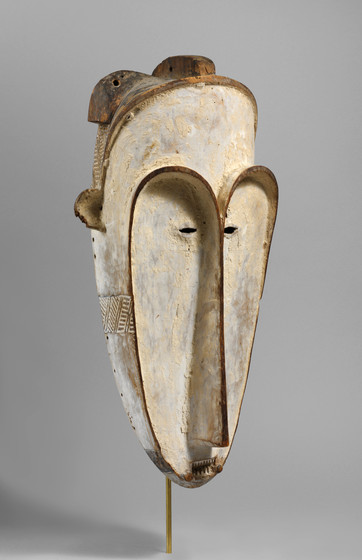
What led you to organize this exhibition around ideas about vision?
We have much to learn from diverse and specific African aesthetic philosophies, and considering a spectrum of African artworks through this theme reminds museum visitors that there is not one single way of seeing, but that every culture imbues the act of seeing with its own values, attributes, and potentialities. It encourages visitors to understand seeing and looking from African perspectives.
The exhibition also explores how these works have enabled their owners, users, and performers to transcend ordinary existence in order to bridge the visible and invisible worlds. It asks if the action of seeing is really about what we see, or rather what we could see, might see, and what we cannot physically see but can only imagine in the mind’s eye.
Does the “inner eye” refer to one of those ways of seeing and its qualities or potentialities?
The “inner eye” is a translation of “ojú-inú,” a concept from the Yoruba peoples of Nigeria, which allows certain individuals to see the most essential quality or character—the iwa—of a given thing or person. Ojú-inú is a form of insight and introspective brilliance, and often enables transcendence from one state of being to the next, or from one world to another. In that context, and indeed most African art contexts, vision is understood as more active than static. Vision is not just about seeing and being seen; it is a conduit to transformation.
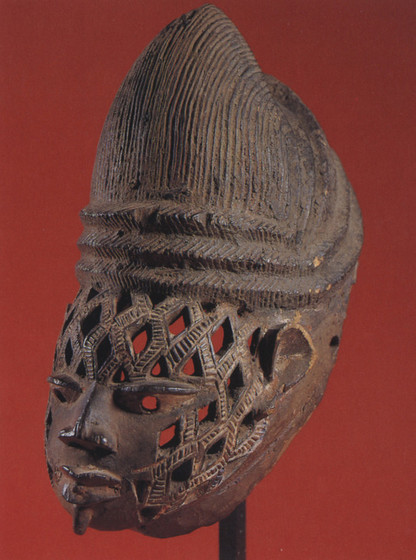
The idea of insight comes up throughout the exhibition, which celebrates artists and performers as visionaries who bring these works to life. In Yoruba culture, artists with the gift of the inner eye are not only able to grasp the essence of a thing or person, but also deep senses of poetry called oriki, which gives the artwork the power to respond. The inner eye gives artists a unique aesthetic consciousness that imbues their creations with ase or “life force.” (Fig. 3)
Can you elaborate on the idea that an artwork can “respond?”
The Yoruba scholar Rowland Abiodun explains it as the notion that experiencing art is always a call and response— a mutual encounter and a two-way gaze between the work and the viewer. That understanding of the gaze becomes literal in this exhibition: when you look at these works, they are explicitly looking back at you, the beholder, turning you equally into something beheld.
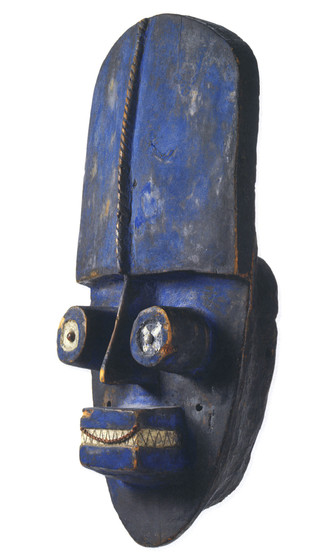
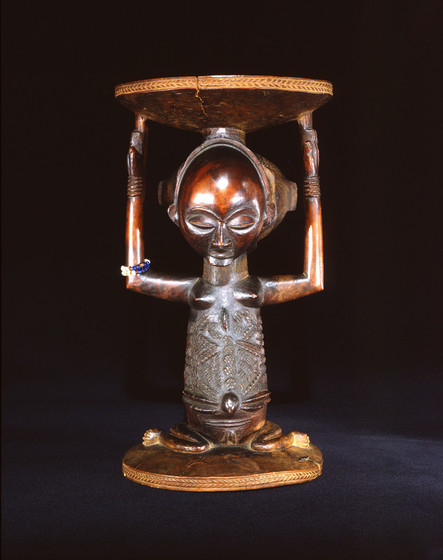
That seems especially palpable with the objects that have eyes, like the figures and masks.
I think that’s one of the gifts of this exhibition: visitors of any age can be entranced by following the eyes and the diverse approaches to how they are rendered in different works. There is a natural human inclination when looking at other living beings to look into their eyes—some magnetic force that links eye to eye, gaze to gaze. And the works in this exhibition show many approaches to the gaze, from inner-directed eyes of spiritual insight (Fig. 5), to projecting eyes of power and protection (Fig. 4), and to multiplicities of eyes for heightened awareness (Fig. 6).
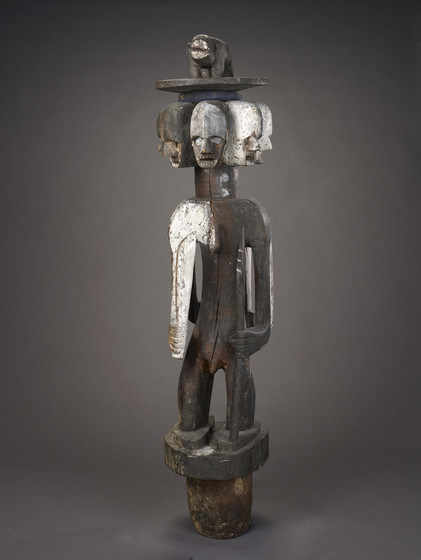
Downcast or indirect eyes of introspection suggest spiritual reverence, for example. The exhibition includes origin figures from Dogon peoples of Mali with eyes directed to the past and central African Luba royal emblems depicting female spirit mediums with deeply contemplative demeanors. In contrast, Kongo and Songye power figures with assertive stares offer protection and vigilance, while a monumental Nigerian Ijo forest spirit figure with seven heads and fourteen eyes sees in all directions at once to safeguard its community.
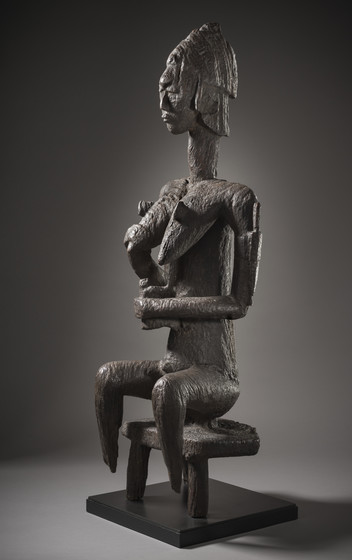
A compelling group of sculptures in the exhibition— organized under the theme of “The Maternal Gaze”—depict mother and child as the most essential and intimate of human relationships. They emphasize the maternal gaze to express the potency of that bond among peoples for whom there is no greater gift than a child. This group of works includes an exceptional Gwan figure (Fig. 7) made by Bamana peoples of Mali that was acquired through the 2013 Collectors Committee, and we’re thrilled to present it for the first time in this exhibition.
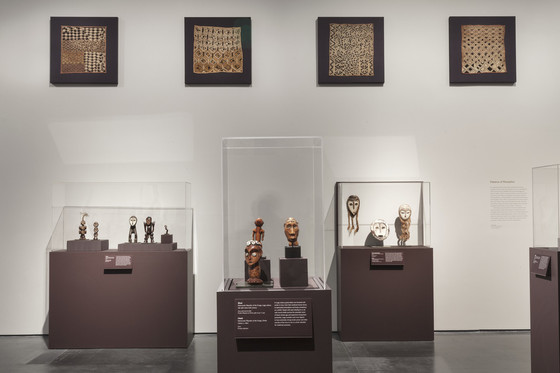
Are there other highlights you are excited to present in this exhibition?
There is a group of 14 textile panels (Fig. 8) made by Kuba artists from the Democratic Republic of the Congo, which come from a collection of Kuba textiles acquired by the museum in 2009. These textiles are woven from raffia and embroidered with striking geometric patterns by Kuba women, and they are embedded with secret knowledge and esoteric wisdom. The women who embroidered these textiles did not strive for regularity. Instead, you can see asymmetrical alternations of tone, pattern, and texture—a quality that resonates with jazz and its association with purposeful dissonance, improvisation, and virtuosity. The textiles demonstrate the visual power and dynamism of design, and compose a striking frieze along one long wall of the exhibition. Another exciting moment of the exhibition features 10 Chi Wara antelope headdresses as if in a dance line to address the innovation of vision that artists could bring to a single genre.
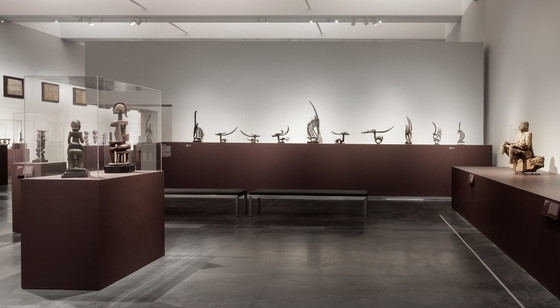
Some of the ways of seeing that we’re discussing are only available to certain individuals, like artists who possess the gift of the inner eye, or the gaze that only a mother can have for her child. Can you explain that limited access, or those “privileged” ways of seeing?
In some cases, works were not intended to be stared at directly or were otherwise subject to certain visual restrictions or discretions. In other contexts, objects were viewed in ephemeral settings, at a distance or perhaps only fleetingly. In masquerades, the visual experience of a work could be transformed by its choreography, such as Punu masks worn on 10-foot stilts or a Teke mask that visualized the cosmos and was cartwheeled and somersaulted to bring the spirit world in closer proximity to the human community. And some works may have been made as much for the otherworldly eyes of spirits and deities as for human viewing and enjoyment.
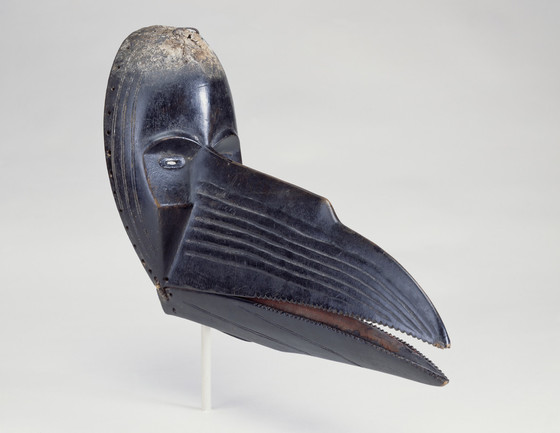
This also brings us back to the theme of insight— seeing not what is plainly visible to the human eye, but rather, that which is interior and inherent. In cultures that have merged with Muslim traditions, for example, the concept of batin refers to the hidden side of every visible reality. That concept appears in the exhibition in a dance mask (Fig. 9) used by Mano men of Liberia, which is inscribed on the inside with mystical writings and invocations. Those inscriptions enhance the potentialities of the dancer performing the mask and offer protection to the community for whom it performs, but only the dancer would ever see or even know about them.
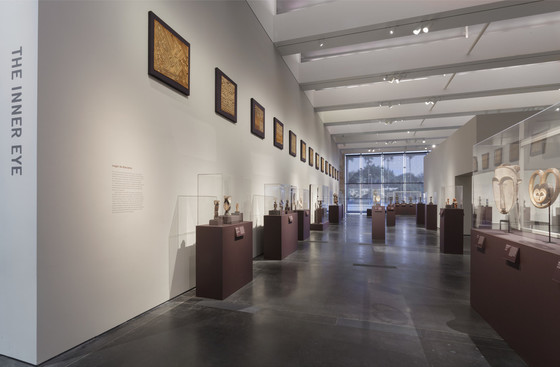
That highlights the seemingly huge divide between experiencing these works in their intended contexts and seeing them in a Western museum like LACMA. How does this exhibition attempt to bridge that gap?
Certainly, museum experience is predicated upon looking. There is an assumption that when we see art in most Western museum settings, objects are meant to be scrutinized and beheld, and in a sense consumed by visitors’ eyes. Yet, as we’ve discussed, “looking” is a culturally determined activity.
I love thinking of “art as a verb,” as Herbert M. Cole has written—of art being an action. The works in this exhibition have guided their owners, users, and performers from human to spirit realms, from this world to the next, and to the highest levels of esoteric wisdom. My hope is that, in this museum setting, these works can likewise lead visitors to question acts of seeing and looking, help them understand visuality from African perspectives, and challenge them to extend their own perception beyond the visible.
The Inner Eye: Vision and Transcendence in African Arts is on view in the Resnick Pavilion through July 9, 2017.



